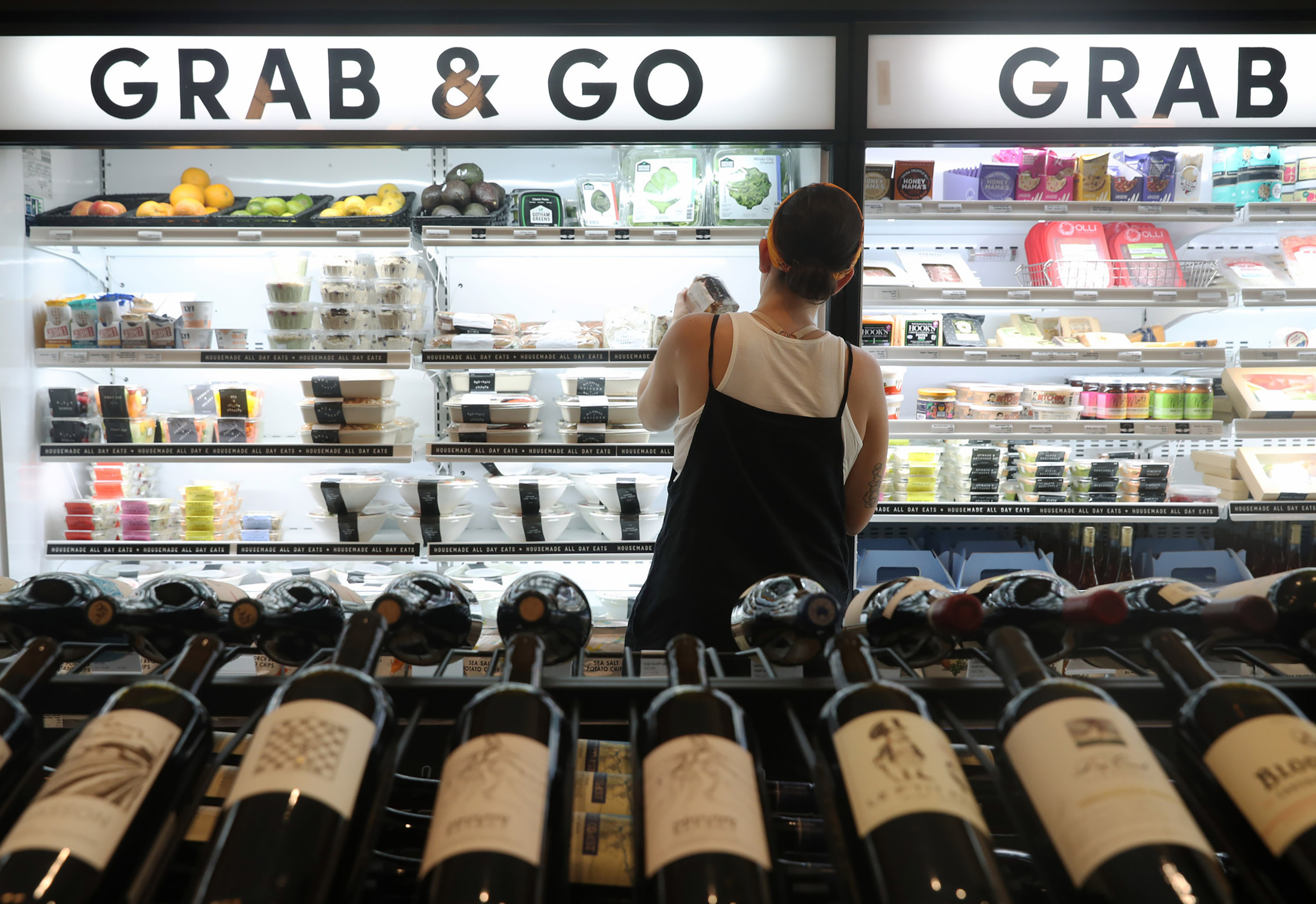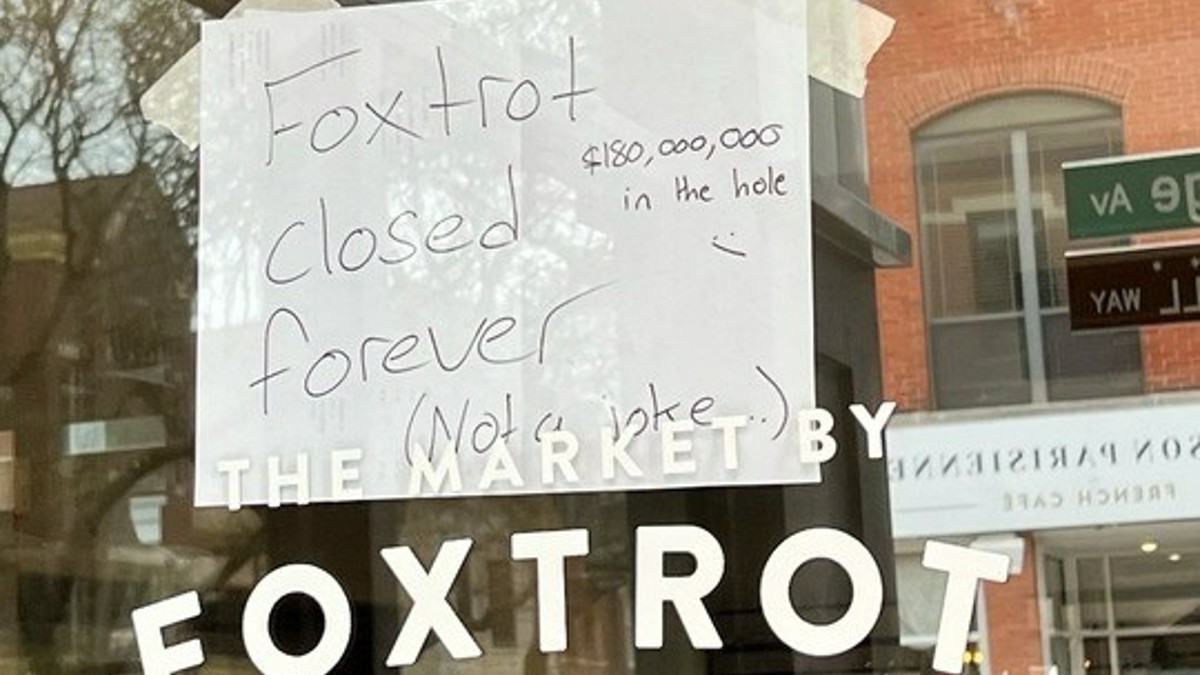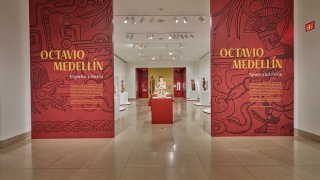
When Dallas Mayor Eric Johnson declared January 26, 2022, Octavio Medellín Day, he honored the artist whose fingerprints are all over North Texas.
The Dallas Museum of Art continues that celebration with Octavio Medellín: Spirit and Form, an exhibition exploring his influence on the Texas art scene through his art and teaching.
“Octavio Medellín was a great artist and a very influential mentor and an exemplary citizen of Dallas,” said Dr. Agustin Arteaga, the museum’s Eugene McDermott Director.
Featuring approximately 80 works, the exhibition is on view through January 15.
Get DFW local news, weather forecasts and entertainment stories to your inbox. Sign up for NBC DFW newsletters.
“Medellín believed that each material had a unique soul that should guide artists as they gave their ideas form," said Dr. Mark A. Castro, The Jorge Baldor Curator of Latin Art and curator of the exhibition. "At the same time, he felt compelling art drew in the strengths of the artists in spirit, instilled in the work during the creation. For Medellín, it was the mixing of form and that intangible spirit that gave art the power to move hearts and minds."
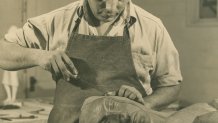
Born in Matehuala, San Luis Potosí, Mexico, Medellín’s family immigrated to San Antonio in 1920 to escape the uncertainty following the Mexican Revolution. When he briefly studied at the Art Institute of Chicago, he focused on painting.
The Scene
“He learned to carve on his own. I think he had probably a lot of lessons at home,” Castro said. “He famously said he just experimented. He found his voice on his own.”
He returned to Mexico City after hearing about the flourishing art scene and encountered some of the most important artists of Mexican Modernism.
He traveled through the countryside along the Gulf Coast, meeting artisans working in rural areas.
When he returned to San Antonio, he began creating sculptures in wood, clay, and stone.

Spirit of the Revolution, crafted out of Texas limestone in 1932, reflects history’s complexities.
“He’s thinking back on the Mexican Revolution, which had such a pivotal impact on his life but also on the direction of which the country is going, now ten years after that conflict,” Castro said.
The sculpture features three allegorical characters: a soldier, representing those fighting for freedom; a serpent, representing ancient heritage; and a woman with her arms raised in blessing, representing impact of Catholicism and Europeanism. The three figures are intertwined, suggesting a complex national identity.
“What I love about this work is it is a veritable tangle of relationships,” Castro said. “He understood how messy history is.”
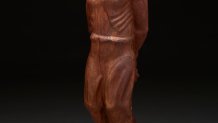
The Hanged is one of Medellín’s striking works. The figure with a noose around his neck was a common sight during his childhood in Mexico.
“For him, it was a memory,” Castro said. The work was also evocative of the lynching of minority men during the Jim Crow era of his adopted country.
The iconic imagery of The Hanged appears in The History of Mexico, a carved column of Honduras red mahogany fluidly depicting the nation’s ancient era, Spanish conquest, the Mexican Revolution and Reconstruction.
“It’s an astonishing work because it really invites your participation. You have to walk around it to really see it,” Castro said. “It also evokes Mexican murals with this idea of moving around a space to tell a story.”
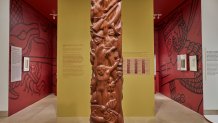
Medellín’s work caught the attention of art patron Lucy Maverick. She paid his salary so he could focus solely on art, and she support his 1938 trip to Yucatán to study the Maya ruins at Chichén Itzá. The trip inspired drawings, prints and decorative objects.
Even as his works became more abstract in his later career and he experimented with mediums such as printmaking, pottery, mosaic, and stained glass, Medellín returned to the motifs he encountered on this trip.
“It was this moment in his life that he talked about frequently and that kept affecting his work on and on,” Castro said.
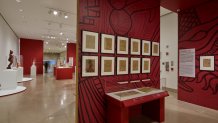
Medellín taught throughout his career, leaving a living legacy of artists. He taught at North Texas State Teacher’s College (now the University of North Texas) and SMU. In 1945, he began his 21-year tenure at the Dallas Museum of Fine Art’s school. He opened the Octavio Medellín School of Sculpture in Oak Cliff in 1966. The school is now called the Creative Arts Center and is in East Dallas.
More than 20 years after his death, Medellín is considered a beloved mentor and guide.
“Every former colleague, peer or student that I’ve met has a story of the moment when Octavio Medellín inspired or challenged them, pushing them to grow and find their artistic voice,” Castro said.
This exhibition also highlights Medellín’s public works with preparatory drawings and photographs from the artist’s personal archives. Among the color drawings of completed works is a proposal rejected by a local Episcopal Church. The drawings included a note about why the church did not move forward with Medellín’s concept of candlesticks and baptismal font.
“They didn’t like that it was so, as they put it, airy, not solid enough and not traditional enough," Castro said. "And they were very clear that they felt he was uncompromising. You start to see these moments where he really chooses to keep his principals on how he wants to work.”
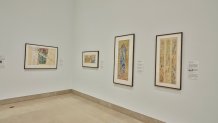
Medellín’s public works are still part Texan’s everyday lives: the mosaic murals at St. Bernard of Clairvaux Catholic Church near White Rock Lake; the fused-glass window at the University Catholic Center in Austin; and a series of fused-glass windows salvaged from the now-demolished Trinity Lutheran Church in Dallas that are now installed at the Moody Performance Hall and Love Field Airport.
“They are literally part of our community, bringing people joy, offering solace and enriching their daily lives,” Castro said.
Learn more at https://dma.org/art/exhibitions/octavio-medellin-spirit-and-form.

